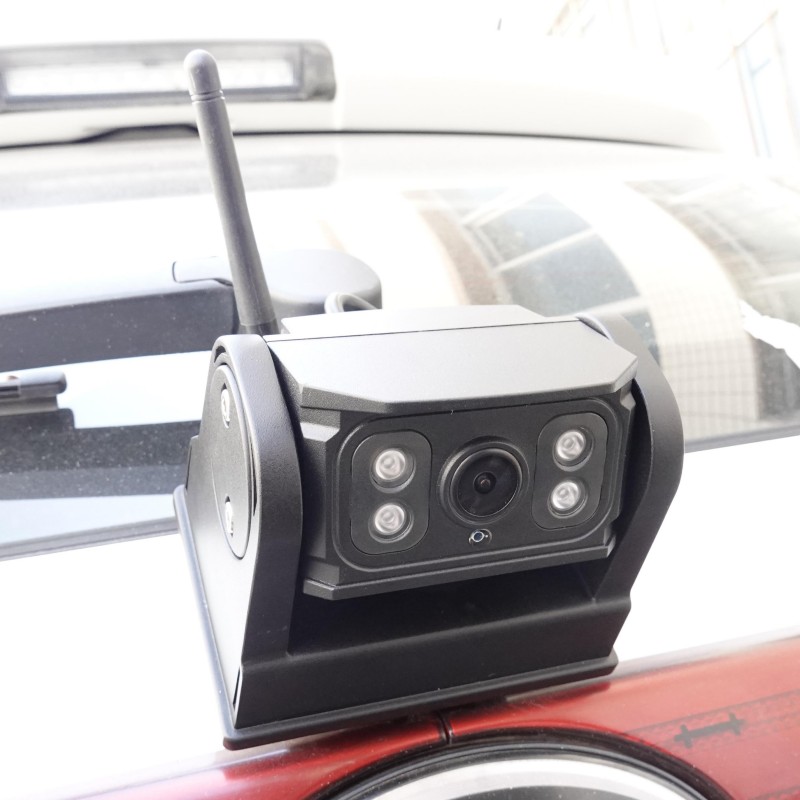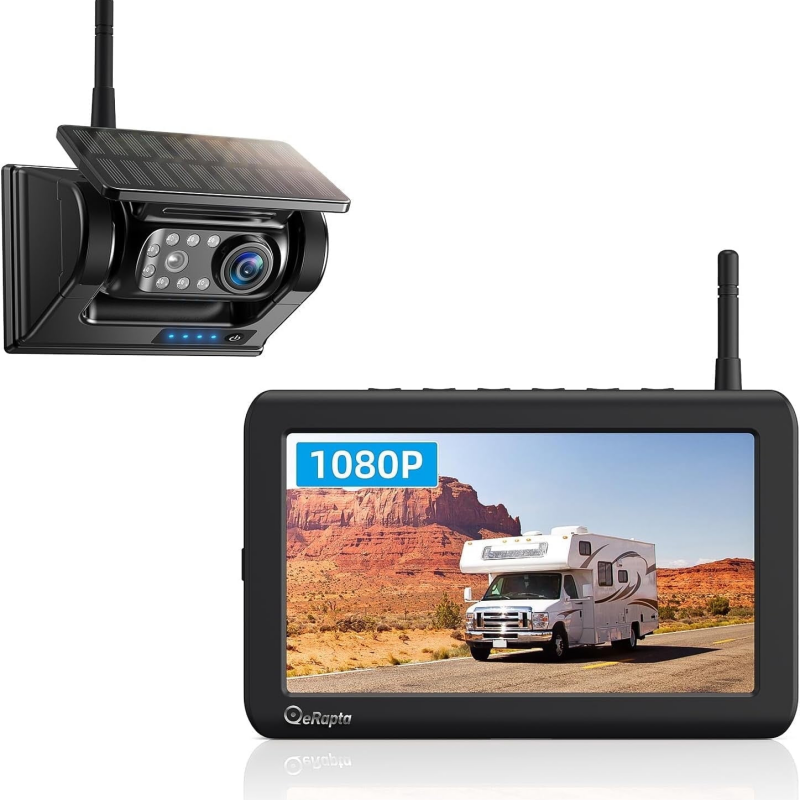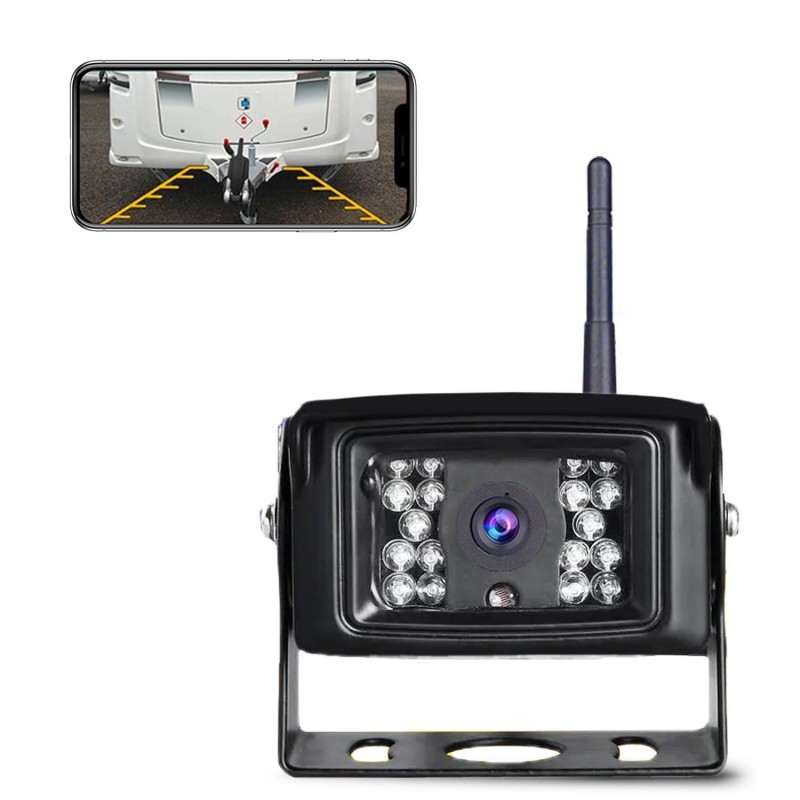Driving an RV offers an unparalleled sense of freedom and adventure. However, it also comes with unique challenges, especially when it comes to navigating tight spaces or reversing in unfamiliar locations. This is where a wireless backup cameras for RVs becomes invaluable. It enhances safety, providing a clear view of what’s behind and allowing for safer maneuvering. Not only does it improve visibility, but it also gives RV owners peace of mind while on the road. In today’s digital age, incorporating technology into our everyday activities is essential, and safe driving should be a priority. A wireless backup camera serves as an essential tool that can prevent accidents and enhance the overall driving experience.

Understanding Wireless Backup Cameras
Wireless backup cameras have revolutionized the way we approach visibility issues while driving larger vehicles, such as RVs. Unlike traditional wired systems, a wireless camera eliminates the need for extensive setup and installation complexities. This system typically consists of a camera placed at the rear of the vehicle and a monitor that displays the camera’s feed, mounted inside the RV.
The beauty of wireless backup cameras lies in their convenience. They can be easily installed without requiring professional help, which makes them ideal for RV owners who may want to set it up themselves. Additionally, they are adaptable, allowing for various mounting positions that can suit different RV designs.
Wireless technology ensures that there are no cumbersome wires trailing from the camera to the monitor, reducing the likelihood of damage during travel. Moreover, wireless systems operate with low latency, enabling real-time viewing as the driver maneuvers the vehicle.
Key Features to Look For
When shopping for a wireless backup camera for RVs, there are several key features that should influence your decision. Here are the most important aspects to consider:
Image Quality: The clarity of the video feed is paramount. Look for cameras that provide HD resolution to ensure that you can clearly see any obstacles behind the RV.
Field of View: A wider field of view allows for better monitoring of blind spots. Opt for cameras that boast a viewing angle of at least 120 degrees or more.
Night Vision: Many driving situations occur in low-light conditions. Night vision capability allows the camera to capture clear images even after dark, enhancing safety when reversing at night.
Durability: The camera should withstand harsh weather conditions, considering it will be mounted on the exterior of the RV. Waterproof and weather-resistant features are crucial for longevity.
Ease of Installation: The best systems are those that allow for hassle-free setup. Look for cameras that come with detailed instructions for DIY installation.
Monitor Size: A larger monitor facilitates easy viewing of the camera feed, especially when navigating. Ensure that it fits well within the driver’s line of sight without obstructing visibility.
The Benefits of Installing a Wireless Backup Camera
Opting for a wireless backup camera for your RV comes with an array of benefits that enhance your driving experience. Let’s delve into some of them:
Safety: The primary function of such cameras is to provide a clearer view of any obstacles or pedestrians that may be lurking behind your RV. This significantly reduces the risk of accidents and enhances overall safety when maneuvering.
Convenience: Whether you’re pulling into a campsite or navigating a narrow lane, the convenience of having a real-time visual aid cannot be overstated. Backup cameras help in making accurate judgments about distance and clearance.
Increased Confidence: Many RV owners report feeling more confident while driving since they can better assess their surroundings. This confidence is crucial, especially for newer drivers who may be intimidated by the size of their vehicle.
Insurance Benefits: Some insurance companies may recognize the proactive safety measures taken by RV owners that integrate backup cameras. This could potentially lead to lower premiums.
Aiding in Communication: When coupled with a wireless system, safety extends beyond the driver. Passengers can also communicate to aid in safe reversing, making the process smoother.

Reduced Stress: Parking, especially in crowded spaces, can be stressful even for experienced drivers. With a backup camera, RV drivers can park with ease, leading to a more enjoyable experience.
Common Misconceptions About Wireless Backup Cameras
While the benefits of wireless backup cameras are many, several misconceptions continue to circulate that may deter potential buyers. Understanding these myths can guide RV owners towards making more informed decisions.
They’re Too Pricey: Many RV owners believe that wireless backup cameras are expensive, but this is not always the case. There are various models available at different price points, making it easier to find one within your budget.
Installation Requires Professional Help: As mentioned earlier, many wireless backup camera systems are designed for easy DIY installation. With the right tools and guidance, most individuals can set it up in a short amount of time.
They Are Only Useful for New RV Owners: While first-time RV owners benefit significantly from backup cameras, experienced drivers can also encounter situations where the camera becomes necessary, especially in busy areas.
All Models Are the Same: This misconception can lead to purchasing ill-suited devices. Different models offer diverse features, so doing research is essential to select the right product for your unique needs.
Wireless Systems Are Unreliable: While it’s true that older wireless technology had some issues with signal integrity, modern advancements have made contemporary systems highly dependable, providing steady signals without interference.
How to Maintain Your Wireless Backup Camera
After installing a wireless backup camera for RVs, maintaining it is crucial for longevity and reliability. Here are some essential maintenance tips:
Regular Cleaning: Like any electronic device exposed to the elements, it will accumulate dirt and debris. Regularly wipe the camera lens to ensure a clear image.
Check for Signal Integrity: Occasionally, test the wireless connection between the camera and monitor. Issues may arise due to interference or physical obstructions; ensure the signal is strong.
Inspect for Damage: Always check the camera housing and connections for signs of damage, especially after long trips or in foul weather.
Update Firmware: If your wireless backup camera allows for updates, make sure to keep the firmware current to avoid any potential issues and to benefit from newer features.
Store Properly: When the RV is not in use, consider removing the camera or disconnecting the monitor to prevent damage.
Choosing the Right Wireless Backup Camera
With numerous options saturating the market, selecting the best wireless backup camera for your RV can feel overwhelming. Here are some practical steps to aid your decision-making:
Research and Reviews: Start by researching various brands and models. User reviews can provide insights into the camera’s actual performance and reliability.
Assess Price vs. Features: Determine your budget and then compare the features offered by various models in that price range. The most expensive option may not always be the best for your needs.
Consider Brand Reputation: Certain brands have built a reputation for quality products. Look for established companies with positive customer experiences and responsive customer service.
Seek Recommendations: Consult fellow RV owners or online forums for recommended models. Hands-on experiences can guide you to the best choice tailored to your needs.
Analyze Warranty Policies: Ensure you check the warranty and any return policies. A reliable warranty can safeguard your purchase should any issues arise.

Conclusion
Investing in a wireless backup camera for RVs can significantly enhance both safety and convenience during travel. The peace of mind that comes from having a clear view of what’s behind you is unmatched. As an RV owner, the ability to navigate with confidence is instrumental in ensuring enjoyable journeys. By understanding the various options available, evaluating features, and addressing common misconceptions, you can make an informed decision that best suits your requirements. Regular maintenance and monitoring can help keep your system in optimal condition. Finally, integrating a wireless backup camera not only protects the vehicle and passengers but also elevates the entire RV experience. Embarking on road trips should be about exploration and joy—ensure you take the necessary steps to make your travels safe, and let technology lend a hand.